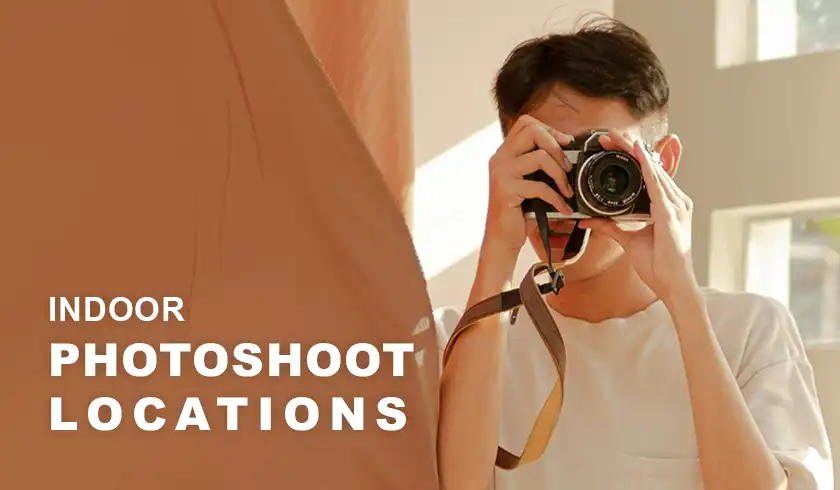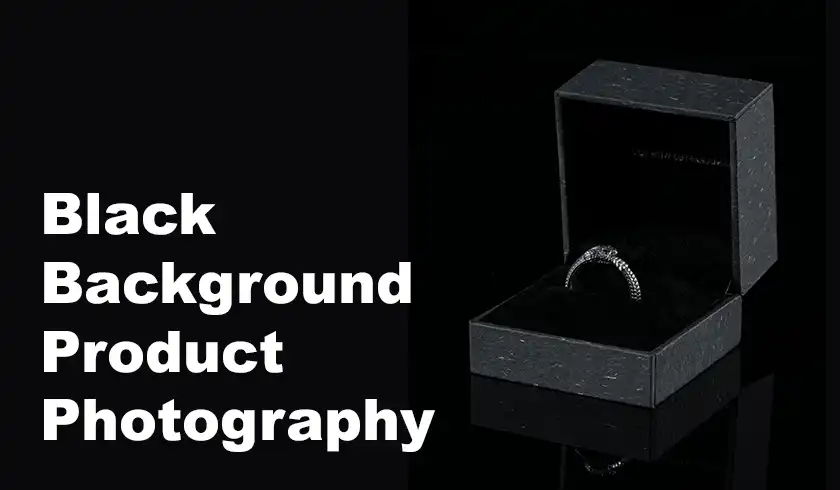Are you looking to spice up your photography game with some unique indoor locations? You’re in luck! Indoor photoshoots offer a perfect blend of creativity, comfort, and control that outdoor shoots can’t always match. From the elegant halls of art galleries to the cozy nooks of your favorite cafe, the possibilities are endless.
In this article, I’ll guide you through some of the most captivating indoor photoshoot locations. We’ll explore everything from the quiet corners of libraries to the grand stages of theaters. Plus, I’ll share some insider tips on camera settings to help you capture the perfect shot, no matter where you decide to set up your indoor studio.

Art Galleries or Museums
Art galleries and museums are a photographer’s dream come true. These spaces offer a unique atmosphere and visual appeal that can elevate any photoshoot.
When shooting in art galleries, I love the pristine white walls that serve as the perfect backdrop for portraits. The clean lines and neutral colors allow your subject to really pop. Plus, the artwork itself can add an interesting element to your shots.
Museums, on the other hand, offer a more diverse range of backdrops. From ancient artifacts to modern installations, there’s something for every style of photography.
Here are some tips for shooting in art galleries and museums:
- Use natural light when possible. Many galleries have large windows that provide beautiful, soft lighting.
- Play with reflections. Polished floors and glass cases can create interesting mirror effects.
- Incorporate the artwork into your shots. Use paintings or sculptures as framing devices or interesting backgrounds.
- Experiment with different angles. Try shooting from low or high vantage points to create unique perspectives.
Remember, these spaces are all about creativity and inspiration. Let the surroundings guide your artistic vision, and you’ll end up with some truly stunning shots.
Libraries
Libraries are the unsung heroes of indoor photoshoot locations. There’s something magical about being surrounded by books that creates a unique ambiance perfect for thoughtful, introspective shots.
When I step into a library, I’m immediately struck by the sense of calm and focus. It’s an ideal setting for portrait photography, especially if you’re going for a studious or intellectual vibe. The soft, warm lighting that’s typical in libraries adds a cozy glow to your photos that’s hard to replicate elsewhere.
Here’s why I love shooting in libraries:
- Natural framing opportunities: Bookshelves create natural frames and leading lines that can add depth to your composition.
- Variety of textures: From smooth book covers to rough wooden tables, libraries offer a range of textures to play with.
- Quiet corners: Libraries often have secluded nooks perfect for intimate portraits or detail shots.
- Character and history: Many libraries, especially older ones, have unique architectural features that can add character to your photos.
- Props galore: Books make great props! Use them to add context or create interesting compositions.
When shooting in a library, keep these tips in mind:
- Be respectful of other library users. Keep noise to a minimum and avoid disrupting anyone’s reading or studying.
- Use a wide aperture to blur out distracting backgrounds and focus on your subject.
- Play with shadows cast by bookshelves for dramatic effect.
- Look for interesting staircases or balconies for unique angles.
- Incorporate reading or studying into your poses for natural-looking shots.
Remember to always check with the library staff before setting up your shoot. Some libraries may require special permission or have specific rules about photography.
Cafes or Restaurants
Who doesn’t love a good coffee shop or restaurant photoshoot? These locations offer a perfect blend of casual comfort and stylish ambiance that can really elevate your indoor photography game.
When I think of cafe photoshoots, I imagine warm, inviting spaces filled with the aroma of freshly brewed coffee. The soft chatter of patrons and the gentle clink of cups create a lively yet relaxed atmosphere that’s perfect for capturing authentic moments. Restaurants, on the other hand, can offer a more upscale vibe, with elegant table settings and moody lighting that’s ideal for food photography or romantic couples shoots.
Here’s why cafes and restaurants make great photoshoot locations:
- Natural, candid moments: These spaces encourage relaxed, natural poses and interactions.
- Interesting lighting: Many cafes and restaurants have unique lighting fixtures that can add character to your shots.
- Built-in props: From coffee cups to wine glasses, there’s no shortage of props to incorporate into your photos.
- Variety of backgrounds: Choose from cozy corners, sleek bar areas, or outdoor patios for different looks.
- Weather-proof: No need to worry about rain or harsh sunlight ruining your shoot.
When planning a cafe or restaurant photoshoot, keep these tips in mind:
- Choose a time when the venue isn’t too busy to avoid disrupting other customers.
- Ask permission from the owners or managers before setting up your shoot.
- Use the venue’s decor to your advantage. Interesting wall art or unique furniture can add depth to your compositions.
- Play with depth of field. A wide aperture can blur out background diners while keeping your subject in sharp focus.
- Experiment with food and drink styling for Instagram-worthy shots.
- Capture genuine moments of enjoyment, like sipping coffee or sharing a laugh over a meal.
Remember, the key to a successful cafe or restaurant shoot is to blend in with the environment. You want your photos to look natural and unposed, as if you’re just capturing a casual outing with friends.
Greenhouses or Conservatories
Greenhouses and conservatories are magical spaces that bring the beauty of the outdoors inside, creating a lush, tropical paradise no matter what the weather’s like outside.
When I step into a greenhouse, I’m immediately transported to another world. The air is warm and humid, filled with the earthy scent of plants and flowers. Sunlight filters through glass panels, creating a soft, dreamy quality that’s perfect for ethereal portrait shots.
Here’s why I love shooting in greenhouses and conservatories:
- Abundant natural light: The glass structures let in plenty of soft, diffused light that’s ideal for photography.
- Vibrant colors: From lush greens to vibrant florals, these spaces are a color photographer’s dream.
- Interesting textures: Leaves, petals, and even the greenhouse structure itself offer a variety of textures to play with.
- Year-round availability: You can capture a tropical vibe even in the dead of winter.
- Unique architectural elements: Many greenhouses have interesting structural features that can add depth to your compositions.
When planning a greenhouse or conservatory photoshoot, keep these tips in mind:
- Check the humidity levels. High humidity can fog up your lens, so bring a cloth to wipe it down regularly.
- Use a polarizing filter to reduce glare from the glass and enhance the colors of the plants.
- Play with different focal lengths. Wide-angle shots can capture the grandeur of the space, while macro shots can highlight intricate plant details.
- Incorporate the greenhouse structure into your shots. Use glass panels or metal frameworks to create interesting framing or leading lines.
- Experiment with backlighting. Shooting towards the light can create a beautiful, ethereal glow around your subject.
- Be mindful of the plants. Avoid touching or damaging any of the flora.
Whether you’re going for a tropical paradise vibe or a more subtle, natural look, greenhouses and conservatories offer endless possibilities for creative indoor photography.
Hotels or Historical Buildings
Hotels and historical buildings offer a perfect blend of elegance, character, and versatility for indoor photoshoots. These spaces are like stepping into a different era, each with its own unique story and visual appeal.
When I think of hotel photoshoots, I imagine plush lobbies with grand staircases, luxurious suites with panoramic views, and elegant ballrooms just begging to be photographed. Hotels offer a range of settings in one convenient location, making them ideal for fashion shoots, wedding photography, or even corporate portraits.
Historical buildings, on the other hand, bring a sense of timelessness and authenticity to your photos. From ornate Victorian mansions to converted industrial spaces, these locations offer rich textures, unique architectural details, and a sense of history that can add depth and interest to your images.
Here’s why I love shooting in hotels and historical buildings:
- Variety of settings: From cozy rooms to grand halls, you can get multiple “looks” without changing locations.
- Interesting architectural details: Think ornate moldings, grand staircases, and vintage fixtures.
- Controlled environment: No need to worry about weather or changing light conditions.
- Professional amenities: Many hotels offer services like on-site styling rooms or catering, which can be helpful for larger shoots.
- Historical significance: These buildings often have fascinating stories that can inspire your creative direction.
When planning a shoot in a hotel or historical building, keep these tips in mind:
- Always get permission first. Many of these locations require booking in advance and may have specific rules about photography.
- Scout the location beforehand if possible. This will help you plan your shots and identify any potential challenges.
- Use wide-angle lenses to capture the grandeur of large spaces.
- Play with natural light. Many old buildings have large windows that provide beautiful, soft lighting.
- Incorporate the building’s unique features into your compositions. Use doorways as frames, or staircases as leading lines.
- Be respectful of the space. Avoid moving or touching historical artifacts or hotel property without permission.
Whether you’re capturing the luxury of a five-star hotel or the timeless beauty of a historical landmark, these locations offer a wealth of creative possibilities.
Studios with Various Backdrops
Studios with various backdrops are like a photographer’s playground. These versatile spaces are blank canvases, waiting for you to unleash your creativity and bring your vision to life.
When I step into a well-equipped studio, I feel like a kid in a candy store. The possibilities are endless! From seamless paper backdrops in every color of the rainbow to textured walls, from green screens to cycloramas, studios offer a level of control and flexibility that’s hard to match in other indoor locations.
Here’s why I love shooting in studios with various backdrops:
- Complete control over lighting: You can shape the light exactly how you want it, from soft and flattering to dramatic and moody.
- Versatility: Change the entire look and feel of your shoot in minutes by switching backdrops.
- Weather-proof: No need to reschedule due to rain or harsh sunlight.
- Privacy: Perfect for shoots that require a controlled environment, like boudoir or product photography.
- Efficiency: With everything at your fingertips, you can work through multiple setups quickly.
When planning a studio shoot, keep these tips in mind:
- Book your studio time in advance, especially if you need specific equipment or backdrops.
- Bring inspiration images to help communicate your vision to your team or model.
- Experiment with different lighting setups. Try rembrandt lighting for portraits, or use colored gels for a more creative look.
- Don’t be afraid to mix and match backdrops and props to create unique combinations.
- Use a fan to add movement to hair or clothing for dynamic shots.
- Take advantage of any available props or furniture to add depth to your compositions.
Whether you’re shooting high-fashion editorials, corporate headshots, or creative personal projects, a well-equipped studio gives you the tools to bring any vision to life.
Industrial Warehouses
Industrial warehouses have become a hot commodity in the photography world, and for good reason! These raw, edgy spaces offer a unique atmosphere that’s both gritty and stylish.
When I first stepped into an industrial warehouse for a shoot, I was blown away by the sheer potential. The high ceilings, exposed brick walls, and large windows create a unique atmosphere that’s like stepping into an urban playground where creativity knows no bounds.
Here’s why I love shooting in industrial warehouses:
- Raw, authentic feel: The unfinished look adds character and depth to your photos.
- Interesting textures: From rough concrete floors to rusty metal fixtures, there’s no shortage of textural elements to incorporate into your shots.
- Natural light: Many warehouses have large windows or skylights that provide beautiful, diffused lighting.
- Versatility: These spaces can be dressed up or down to suit a variety of styles, from edgy fashion shoots to romantic weddings.
- Unique architectural features: Think exposed beams, industrial machinery, or graffiti-covered walls.
When planning a warehouse photoshoot, keep these tips in mind:
- Safety first! Make sure the warehouse is in good condition and safe to shoot in.
- Bring cleaning supplies. Old warehouses can be dusty, and you might need to tidy up your shooting area.
- Use wide-angle lenses to capture the vastness of the space.
- Play with shadows. The harsh lines of industrial spaces can create interesting shadow patterns.
- Incorporate movement. The large open spaces are perfect for dynamic poses or flowing fabrics.
- Don’t be afraid of negative space. The emptiness of a warehouse can be just as powerful as its features.
Whether you’re going for an edgy fashion editorial, a gritty portrait series, or even a quirky wedding shoot, industrial warehouses offer a blank slate for your creativity.
Loft Apartments
Loft apartments have become increasingly popular in the world of indoor photography. These spacious, often industrial-style living spaces offer a unique blend of homey comfort and urban chic that’s perfect for a variety of photoshoots.
When I first discovered the potential of loft apartments for photography, I was hooked. The open floor plans, high ceilings, and large windows create a bright, airy atmosphere that’s a dream to work in. Plus, the mix of residential comfort and industrial elements gives you the best of both worlds in one location.
Here’s why I love shooting in loft apartments:
- Natural light: Most lofts have huge windows that flood the space with beautiful, soft light.
- Versatile spaces: The open layout allows you to create multiple “sets” within one location.
- Interesting architectural features: Think exposed brick walls, wooden beams, or industrial-style fixtures.
- Authentic feel: Lofts provide a lived-in look that’s perfect for lifestyle or fashion shoots.
- Mix of styles: The blend of industrial and residential elements offers unique creative possibilities.
Tips for loft photoshoots:
- Use the natural light to your advantage. Position your subject near windows for soft, flattering light.
- Incorporate the unique architectural elements into your compositions. Use exposed beams or brick walls as interesting backdrops.
- Play with the contrast between cozy and industrial vibes. A soft, intimate portrait against a raw, industrial background can be striking.
- Respect the space if it’s someone’s home. Be careful with equipment and leave everything as you found it.
- Experiment with different areas within the loft for varied looks. From the kitchen to the bedroom, each space offers its own unique feel.
Lofts are ideal for fashion, lifestyle, and portrait photography. Their versatility allows you to create diverse looks without changing locations. Just remember to get proper permission before shooting in a residential space!
Ideal Camera Settings for Indoor Photography
Getting the right camera settings is crucial for successful indoor photography. Here’s a guide to help you nail those shots:
Aperture (f-stop):
- For Portraits: Aim for a wider aperture (f/4 or lower) to blur the background and isolate your subject. This creates a beautiful bokeh effect that makes your subject stand out.
- For Wide Shots: Use a narrower aperture (f/11 or higher) to keep most of the scene in focus, like capturing a whole room. This is great for architectural or interior design shots.
ISO:
- Keep ISO as low as possible (around 100) to minimize image noise, which appears as graininess in low-light situations. However, don’t be afraid to bump it up if needed – modern cameras handle high ISO quite well.
Shutter Speed:
- With a Tripod: If you have a tripod for stability, you can use slower shutter speeds (around 1/60th of a second or slower) to allow more light in without camera shake. This is great for low-light situations.
- Without a Tripod: Use a shutter speed fast enough to avoid camera shake, generally 1/100th of a second or faster. You might need to increase ISO to compensate for less light captured with a faster shutter speed.
Remember, these are starting points. Don’t be afraid to experiment and adjust based on your specific indoor environment and the effect you’re trying to achieve. Practice makes perfect, so keep shooting and refining your technique!
Bottom Line
Indoor photography offers a world of creative possibilities. From the elegance of art galleries to the raw appeal of industrial warehouses, each location brings its own unique charm to your photos. By mastering your camera settings and understanding how to work with different indoor environments, you’ll be well on your way to capturing stunning indoor shots. So grab your camera, explore these exciting locations, and let your creativity shine!

